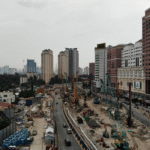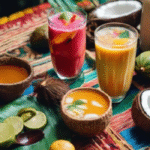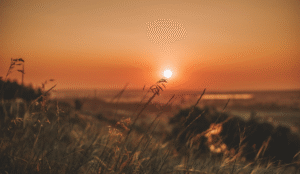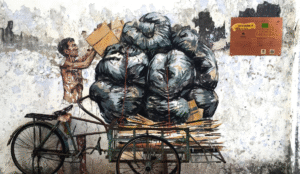Off-the-Beaten-Path: Best Rural Adventures in Sarawak
When most travelers think of Malaysia, their minds often go to the bustling cities of Kuala Lumpur, the beaches of Langkawi, or the cultural charms of Penang. But venture further east to the island of Borneo, and you’ll discover a region filled with untamed beauty, rich indigenous culture, and unforgettable adventures. Welcome to Sarawak—a land where the jungle whispers ancient secrets, and the roads less traveled offer the most rewarding experiences.
Frequently Asked Questions (FAQ)
1. What is famous in Sarawak?
Sarawak is famous for its rich cultural heritage, stunning rainforests, and rare wildlife. It’s home to traditional longhouses, unique indigenous tribes like the Iban and Bidayuh, and iconic places such as Mulu Caves and Bako National Park. Sarawak is also known for its handcrafted beadwork, the Sarawak Regatta, and its vibrant festivals like the Rainforest World Music Festival.
2. What is so special about Sarawak?
What makes Sarawak special is its incredible blend of nature, culture, and adventure. It’s one of the few places where you can meet orangutans in the wild, explore ancient caves, and stay in authentic tribal villages—all in one trip. Unlike other parts of Malaysia, Sarawak retains a deep connection to its indigenous roots, offering visitors a truly off-the-beaten-path experience.
3. Why is Kuching famous?
Kuching, the capital city of Sarawak, is famous for its laid-back charm, cat-themed landmarks, and beautiful riverside views. The name “Kuching” means “cat” in Malay, and the city proudly lives up to its feline identity with cat statues and even a Cat Museum. It’s also a food haven and a cultural melting pot, where you can visit traditional markets, museums, and colonial-era buildings all in one walkable area.
4. What is the famous food of Sarawak?
Sarawak’s most famous food is Sarawak Laksa—a spicy, tangy noodle soup made with a unique blend of sambal belacan, coconut milk, and herbs. Another must-try is Kolo Mee, a dry noodle dish tossed in light sauce, typically served with minced meat and char siu. Other local favorites include Manok Pansoh (chicken cooked in bamboo) and Midin (wild jungle fern stir-fried with garlic or belacan).
5. Where to go in Sarawak, Malaysia?
Sarawak offers plenty of amazing places to visit. Nature lovers should explore Gunung Mulu National Park, a UNESCO World Heritage Site known for its giant caves and limestone formations. For wildlife, head to Semenggoh Nature Reserve to see orangutans. Culture seekers will love Sarawak Cultural Village and the traditional longhouses of Batang Ai. Don’t miss Kuching Waterfront, Bako National Park, and Santubong for a perfect mix of city, beach, and jungle.
Why Choose Rural Sarawak for Your Next Adventure?
Sarawak is the largest state in Malaysia and arguably one of the least explored. While Kuching, its capital, has started to attract more visitors, the true magic of Sarawak lies beyond the cityscape—in the rural heartlands, among the highlands, rivers, and dense tropical rainforests.
Here, life moves at a different pace. The people are warm and welcoming, nature is untouched, and traditions have stood the test of time. If you’re seeking an authentic travel experience far removed from tourist traps, off the beaten path places in Sarawak are calling your name.
1. Bario Highlands: Land of the Kelabit People
Located in the northeastern corner of Sarawak, the Bario Highlands is accessible only by small plane or days of trekking. It is home to the Kelabit, one of Sarawak’s indigenous groups known for their hospitality and peaceful lifestyle.
Bario is famed for its fragrant Bario rice, cool highland climate, and lush surroundings. Visitors can stay in homestays, trek through the jungle to remote villages, and learn about the traditional lifestyles of the Kelabit people. Don’t miss the Bario Food and Culture Festival (Pesta Nukenen), held every year to celebrate local traditions and cuisine.
Why visit? Disconnect from the modern world and reconnect with culture, simplicity, and natural beauty.
2. Long Semadoh Valley: Hidden Gem of Lawas
Another hidden paradise in northern Sarawak, Long Semadoh is a serene valley located deep in the mountains of Lawas. Accessible via logging roads, it remains untouched by mass tourism.
The valley is home to the Lun Bawang community, and offers an immersive cultural experience. Visitors can take part in traditional fishing, enjoy homemade rice wine (tuak), and hike through forests filled with orchids and pitcher plants. What makes it special? It’s one of the most untouched off the beaten path places in Sarawak, ideal for those seeking serenity and cultural exchange.
3. Ulu Baram: Deep Into the Rainforest
Venturing into Ulu Baram is not for the faint of heart—but the rewards are immense. This remote interior of Sarawak is inhabited by various Orang Ulu (upriver people) communities, such as the Kenyah and Kayan.
To reach Ulu Baram, you’ll need to endure long 4WD journeys or river travel. But once you arrive, you’ll find traditional longhouses, ancient crafts like beadwork and sape (traditional lute) music, and lush rainforests teeming with life. The community here thrives in harmony with nature, making it an eye-opening experience for eco-conscious travelers.
Adventure tip: Join a guided expedition to visit waterfalls, caves, and forest trails in the region.
4. Batang Ai: Wildlife and Indigenous Harmony
Located on the border with Indonesia’s Kalimantan, Batang Ai is a protected area that combines conservation with indigenous living. The Batang Ai National Park and its surrounding areas are known for orangutan sightings, dense jungle, and traditional Iban longhouses.
To get there, visitors usually travel from Kuching to Lubok Antu by road and then take a longboat into the interior. Staying in Iban communities offers a rare chance to witness traditional weaving, blowpipe hunting demonstrations, and evening storytelling sessions around the fire.
Highlight: The area is part of the Heart of Borneo conservation initiative—perfect for nature lovers and responsible travelers.
5. Telang Usan: The Road Less Paved
Telang Usan is one of the least visited regions in Sarawak, located in the central highlands of the state. Its name might not ring a bell, but this district is home to spectacular limestone formations, river valleys, and some of the last nomadic Penan people.
Visiting Telang Usan is truly an off the beaten path experience. You’ll find no fancy hotels here—just community homestays, dense jungle, and authentic tribal hospitality.
Experience of a lifetime: Participate in a Penan forest walk to learn ancient survival skills and how to live in harmony with nature
6. Kapit: Gateway to the Upper Rajang
Kapit lies along the Rajang River, the longest river in Malaysia. It is accessible by boat from Sibu, offering a scenic journey through the lifeline of Sarawak.
Kapit serves as a stepping stone to explore the upriver Iban and Kayan longhouses. Life here revolves around the river, and the culture is deeply tied to the land. Visitors can explore the market, visit Fort Sylvia, and arrange homestays in surrounding villages to experience Iban traditions firsthand.
Why go? It’s a living heritage route where stories of headhunting warriors now blend with modern rural life.
7. Ba'kelalan: A Highland Surprise
Often mentioned alongside Bario, Ba’kelalan is another highland settlement in the north of Sarawak. The Lun Bawang people inhabit this peaceful village known for its apple orchards—yes, apples in tropical Malaysia!—cool climate, and friendly community.
Ba’kelalan is a great base for treks into the surrounding highlands and even cross-border trails into Indonesian Borneo. It also offers spiritual tourism with Christian churches playing a central role in local life.
Unexpected joy: try the locally grown apples and salt from mountain springs, which are harvested by hand using traditional methods.
8. Pakan and Julau: Where Tradition Still Lives
Located in central Sarawak, Pakan and Julau are often bypassed by travelers. These rural districts are rich in Iban culture and offer access to authentic longhouses away from commercial routes.
Life here is simple and grounded. Many still practice traditional weaving, paddy farming, and rice wine making. Staying in these areas offers a window into daily rural life in Sarawak, unmarred by mass tourism.
Best for: Travelers looking to support local economies and learn from grassroots communities.
9. Lundu and Sematan: Coastal Escapes with a Twist
Though slightly more developed, Lundu and Sematan still retain their rural charm. Located in western Sarawak, these small coastal towns are surrounded by beaches, waterfalls, and forest reserves like Gunung Gading National Park—home to the world’s largest flower, the Rafflesia.
The local Malay and Bidayuh communities are friendly and hospitable. Enjoy fresh seafood, explore nearby fishing villages, or join community-based ecotourism efforts.
Perfect blend: Combines nature, sea, and culture in a quiet setting.
Rural Travel Tips for Sarawak Adventures
Exploring the off the beaten path places in Sarawak isn’t like a weekend city escape. Here’s what to know before you go:
- Plan Ahead
Many of these areas are not connected by public transport. Arrange guides or transport in advance, especially for interior destinations.
- Stay in Homestays
Support the local economy by choosing homestays. These offer deeper cultural experiences and better environmental sustainability.
- Learn Some Local Phrases
While Bahasa Malaysia is widely spoken, some communities use indigenous languages. Learning greetings in Iban or Kelabit can go a long way.
- Pack Properly
Expect unpredictable weather, long journeys, and limited supplies. Bring durable shoes, insect repellent, power banks, and first aid items.
- Respect Local Customs
Always ask before taking photos, follow local dress codes, and show respect in longhouses and sacred sites.
Why Rural Sarawak is the Future of Responsible Travel
As global travel evolves, many travelers are rethinking what it means to explore new places. There’s a growing awareness that travel should leave a positive impact—not just on the traveler, but on the communities and environments visited. This shift is giving rise to a new generation of explorers who value meaningful encounters over luxury, and authenticity over convenience.
Remote villages and highland communities in Borneo offer an ideal model for this kind of travel. Their lifestyles are deeply intertwined with nature. They depend on the land for food, medicine, and culture, and in return, they protect it with centuries of wisdom. Tourism that respects this balance doesn’t just provide income; it also reinforces the value of preserving their traditional ways of life.
Visitors who venture off the tourist grid often come away with more than photos—they gain understanding, perspective, and even friendships. They’re welcomed into homes, invited to celebrations, and given a glimpse into customs that are rarely witnessed by outsiders. Such moments can be transformative, for both host and guest.
In addition, rural travel naturally limits crowds and environmental strain. Instead of overwhelming destinations with mass tourism, it disperses interest to lesser-known areas, helping avoid ecological degradation and promoting balanced development.
By choosing to explore these lesser-touched regions, travelers contribute to an ethical tourism model—one that values people, planet, and culture equally. It’s not about discovering a place before others do; it’s about engaging with it responsibly, and leaving a light footprint.
Final Thoughts
Travel is often seen as a way to escape daily routines—but sometimes, it’s not about escape at all. It’s about finding connection: with people whose lives are shaped differently, with landscapes that remain wild and unspoiled, and with traditions that echo a slower, deeper rhythm.
Taking the time to explore areas away from tourist hotspots offers something unique. It’s not always easy. The roads may be rough, internet signals weak, and modern comforts rare—but what you gain is immeasurable. In these quiet corners of the world, you’ll find real stories, not curated experiences. The kind of moments that stay with you long after the trip ends.
It’s also a way to challenge your expectations of travel. When you share a meal cooked over woodfire, sleep in a hand-built longhouse, or learn to fish in a mountain stream, you begin to appreciate the richness of lives that may appear simple on the surface. These are the moments that ground us, reminding us of the things that truly matter—community, sustainability, and mutual respect.
Every journey shapes us, but some have the power to reshape how we see the world entirely. Choosing destinations that aren’t in the spotlight allows for a more personal kind of adventure—one filled with learning, gratitude, and growth.
So if your soul seeks more than sightseeing—if it longs for something genuine and grounded—let your compass point toward the quiet paths. Often, the best stories are found where no one else is looking.





